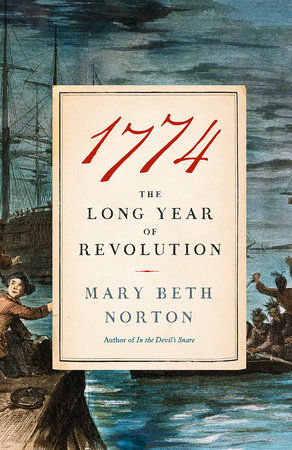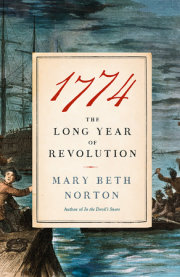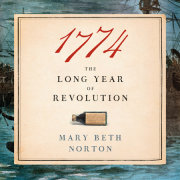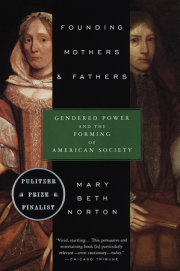Chapter 1
THAT CURSED TEA
During the stormy early morning hours of December 11, 1773, a vessel carrying tea and other cargo to Boston wrecked about two miles southeast of Race Point, the northern tip of Cape Cod. On board the
William were fifty-eight chests of East India Company tea, fifty-five of which were successfully salvaged. The three damaged chests, each containing about 350 pounds of Bohea (black) tea, remained on the Cape when the other chests were transported later in the month to the safety of the British headquarters at Castle William, an island in Boston harbor. Responding to the sudden arrival of approximately 1,000 pounds of tea on their shores, Cape residents worked to earn it, bought and sold it, argued and fought over it, and destroyed some of it.
In so doing, they revealed what could well have happened elsewhere in Britain’s North American colonies had six other vessels carrying the company’s tea been able to offer their cargoes for sale. All seven ships had left England together in October with tea that the EIC was authorized to sell directly to colonists under the terms of a recently adopted law. Upon their arrival in Boston, Charleston, Philadelphia, and New York, the cargoes met different fates, most notoriously destruction at the hands of a large number of disguised Bostonians but also seizure by customs officials (Charleston) and exclusion (New York and Philadelphia).
The story of the so-called Boston Tea Party—it was not dubbed that until the early nineteenth century—is well known today, in large part because it has become an iconic event for Americans, and not just for those who align themselves with a political faction named the Tea Party. It has been the primary subject of two books and is discussed in many others. For most Americans, the “Tea Party” tale encompasses the beginning and end of colonists’ reaction to EIC imports in December 1773. But Bostonians’ violent response to East India Company tea constituted only one of the diverse reactions to Parliament’s Tea Act. Residents of each of America’s largest cities, along with those living on Cape Cod, had to confront directly the challenge posed by large amounts of tea sent by the East India Company.
TEA, LEGAL AND ILLEGAL
Neither American colonists nor Britons expected problems with tea as the year 1773 began. The colonists loved tea; a contemporary described them as “probably the greatest tea drinkers in the universe,” for “even the very paupers” drank tea twice a day. Estimates of consumption varied widely, but all observers concurred that Americans drank “prodigious” amounts of the hot caffeinated beverage. Tea composed a regular part of daily meals. It also served as the basis for socializing in genteel households; families that aspired to gentility purchased teapots, tea tables, and other accessories as soon as they had sufficient income. Women proudly presided over domestic tea tables and over the conversations between women, and among women and men, that took place there, while men traditionally gathered in male-only groups at taverns and coffeehouses.
Calculating the quantity of tea sold in the colonies was and is difficult because so much of it was smuggled. All the tea originated in China, but the once-exotic commodity took various routes into North America. Legal tea came via the East India Company, the monopoly established by England in 1600. Before 1773, the law required the EIC to sell its tea at London auctions to wholesalers, who then vended it to retailers. Such tea was taxed when it entered Britain from Asia and again when exported to the colonies. Yet untaxed tea was smuggled into American ports in many ways, most notably from Holland and its colonies, especially the tiny island of St. Eustatius in the northern Caribbean. Thus smuggled tea was uniformly referred to as “Dutch,” regardless of its origins. But clandestine sources of tea also included ports in Germany, France, Portugal, Denmark, the Danish Caribbean, and Sweden. On the American side of the Atlantic, Rhode Island, Long Island, and Chesapeake Bay served as notorious smugglers’ havens.
A rare surviving set of instructions for smuggling tea discloses how the surreptitious trade operated. In March 1774, Samuel and William Vernon of Newport, Rhode Island, addressed Captain William Tanner of their sloop
Dolphin, directing him to sail to Charleston. He was to load the vessel there with rice, spending as little time as possible in port before formally clearing his cargo for Madeira at the customshouse. If he met other ships while at sea, he should tell them he was sailing to the English port of Hull. Instead of going to Madeira or Hull, though, he was to head to Hamburg, where he should sell the rice to a merchant the Vernons specified. He was to conceal his actual plans from that merchant, informing him that he was next sailing to Gothenburg, Sweden, to buy herring, but when he arrived at Gothenburg he was to use the proceeds of the rice sale to purchase tea, again from a specific firm. He had to load the tea quickly, the Vernons warned Tanner, because authorities in London would soon learn why he was there and might try to prevent the next leg of his voyage. Then Captain Tanner was to sail back across the Atlantic to the Danish Caribbean island of St. Croix, where he was to sell the tea. Even though the letter did not reveal what the owners expected to happen to the tea after the captain disposed of it, a subsequent trip to North America, perhaps to Charleston or Newport, was obviously implied. The Vernons closed their letter by wishing Captain Tanner “a prosperous Voyage.”
Among the most revealing aspects of the Vernons’ instructions was the emphasis on the necessity for Tanner to conceal his plans, both from random ships he might encounter en route and from his associates. After he falsely cleared the vessel for Madeira, other vessels were to be told he was bound for an English port. The merchant in Hamburg could be informed truthfully that he was sailing to Sweden, but he was to hide his intention to purchase tea there. Only after leaving Gothenburg for St. Croix was he free to inform others, including his own crew, where he was going.
Such covert tactics continued when tea neared the North American mainland. New York authorities had a particularly difficult time controlling smugglers because of the complex local geography around Manhattan. Lieutenant Governor Cadwallader Colden reported that ships from St. Eustatius or Holland did not enter the harbor but instead “anchor at some distance in the numerous bays and creeks that our coast and rivers furnish, from whence the contraband goods are sent up in small boats.” Henry Hulton, a customs commissioner stationed in Boston, explained that the same practice also occurred elsewhere along the Atlantic seaboard: the smugglers’ ships “never come nigh their ports of discharge before they are cleared of all their illicit goods by small Vessels on the Coast.” The only way to combat this trade, he advised, was for Britain to deploy many small ships for the purpose. He pointed out that “the Men of War may give protection to such Vessels, but never of themselves will suppress this illicit commerce.”
The clandestine nature of such activities makes it hard to assess how much tea was furtively smuggled into the North American colonies in the eighteenth century. But that the surreptitious trade existed was evident to everyone; one historian has suggested that in some years just 25 percent of the tea consumed in the colonies had been imported legally, while another scholar estimated that the figure could have been as low as 10 percent. Colonial customs entries recorded only 128 pounds of East India Company tea imported into Philadelphia in 1772, yet a knowledgeable observer noted that city residents annually consumed about two thousand chests of Bohea tea. A Philadelphia customs officer’s comment in early 1774 that “smuggling is become almost universal in this town” was supported by a local woman who about the same time remarked casually that what merchants “have done all along” was to “Run it from the Dutch.” New York, similarly, registered just 530 pounds of imported tea in 1772, but the city was said to consume about 1,500 pounds each year.
Judging by customs records, Bostonians were somewhat more law-abiding than Philadelphians or New Yorkers. They imported more than 265,000 pounds of duty-paying tea in 1771 and over 107,000 the following year. But in 1771 Massachusetts residents also reputedly drank an additional 575,000 pounds of smuggled tea. Such illegal tea did not always find buyers, as James Rivington, a Manhattan printer and bookseller who also retailed tea on the side, learned to his likely dismay. In July 1774, he sent four chests of green Hyson tea, concealed in two large trunks conveyed by a British officer, to his Boston agent, the young bookseller Henry Knox. “This being a nice Affair I must intreat that the utmost Secrecy Vigilance and prudence be employed for the Security and early sale of this Article,” he wrote, assuring Knox that the tea was “utterly free from duty”—that is, smuggled.
Knox responded that he, being unfamiliar with selling the commodity, consulted “the first Tea Dealers” in Boston, who explained that “this is the dullest time for it they ever knew” and that another type of tea, the smoky Souchong, would have been more attractive to potential purchasers. Knox noted that “the market was pretty overstock’d” and that “other large Quanti[ti]es” had also been imported from New York. He did not mention another possible reason for the relative lack of demand—a current boycott of tea in Boston (discussed in chapter 2). Knox assured Rivington that he would do his best to sell the tea, but as late as February 1775 he had managed to retail only one chest “to my particular friends.” Smugglers, in short, had to confront the same problems of supply and demand as did legitimate merchants.
Colonists disagreed over the relative merits and quality of EIC and smuggled tea. But one point was clear: illegal tea was much cheaper than its legal alternative, about half or at most two-thirds the price. Enforcement of the customs laws was so lax that shipowners like the Vernons knew they rarely needed to worry about seizure of their cargoes in America; one contemporary hypothesized that only one in five hundred clandestine voyages ended in fines and confiscation. Thus, given the size of the colonial market, the risks were few and the potential profits “immense,” one man remarked. Merchants and officials in the colonies and the home island alike accordingly strategized about how the EIC could capture the large share of the American market that smugglers dominated.
By early 1773, actions by Parliament and the ministry, coupled with colonial reactions, tended to increase rather than decrease the surreptitious trade in tea. The problem arose from the particular configuration of tea taxes developed as a part of the Townshend duties of 1767. The British government needed revenue to help pay off the huge debt run up to win the Seven Years’ War against France, which ended in 1763.
Its first major attempt to raise money from the colonies, the Stamp Act of 1765, aroused extensive opposition, in part because colonists complained of having no voice in its passage. The law, mimicking one long in force in England, required tax stamps on legal and printed documents. No law could have been better designed to anger such influential colonists as printers, merchants, and lawyers. Protests occurred in many port cities; merchants were pressured to agree not to import British goods until the law was repealed; crowd actions eventually forced all the men appointed to distribute the tax stamps to resign; and the Stamp Act Congress met in New York to adopt resolutions against the act. Parliament repealed the law the following year.
But Great Britain still needed added revenue, and because colonists had routinely paid customs duties on items purchased from foreign countries, in 1767 Chancellor of the Exchequer Charles Townshend proposed, and Parliament adopted, a law that laid duties on tea and a few other imports into the colonies. The Townshend duties, though, taxed items originating within the British Empire; further, the money collected was designated to pay some colonial officials’ salaries, previously controlled by (and thus a source of leverage for) provincial assemblies. Once more, colonists protested. In 1768 and 1769, many men and women signed nonimportation and nonconsumption agreements, promising to boycott British goods, especially tea, until the taxes were rescinded. Again, Parliament retreated, in 1770 repealing most of the duties but leaving the tea tax in force as a symbol of British authority. In the wake of repeal, the colonial boycott of tea largely collapsed, except in the middle colonies. Thus the minuscule importations of legally taxed tea into Philadelphia and New York during the early 1770s were explained not only by other factors but also by those jurisdictions’ continuing adherence to the earlier boycott agreements. The young Philadelphia lawyer Joseph Reed, for instance, commented that relying on the “clandestine Trade [in tea] . . . has been deemed a Species of Patriotism” because following the law would surrender “an essential Principle of Liberty.” By contrast, as was obvious from the record of their purchases of EIC tea, after 1770 many Bostonians abandoned the boycott and resumed paying the tea duty, which aroused considerable criticism from other colonists.
Copyright © 2020 by Mary Beth Norton. All rights reserved. No part of this excerpt may be reproduced or reprinted without permission in writing from the publisher.












